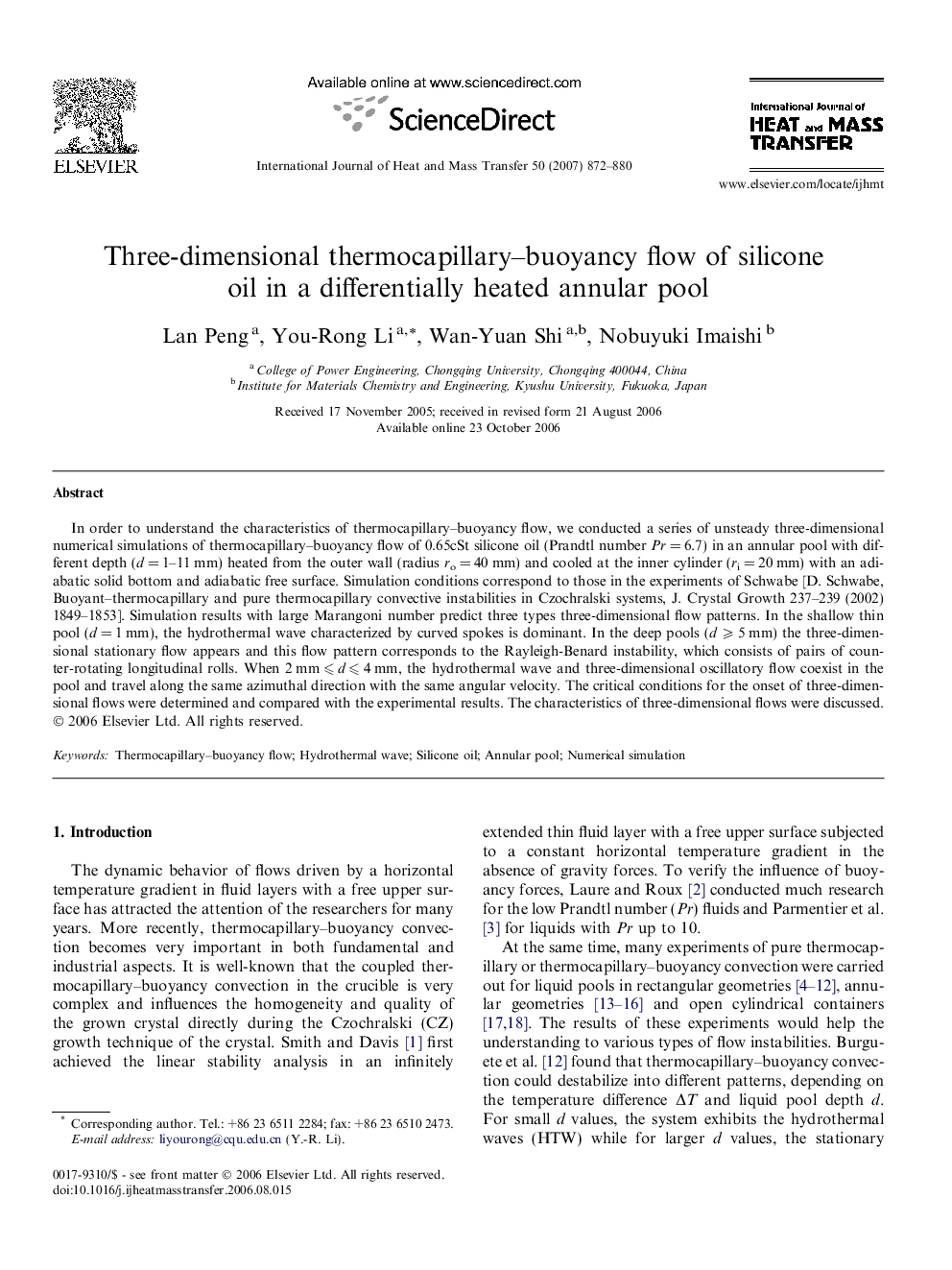| Article ID | Journal | Published Year | Pages | File Type |
|---|---|---|---|---|
| 661705 | International Journal of Heat and Mass Transfer | 2007 | 9 Pages |
Abstract
In order to understand the characteristics of thermocapillary-buoyancy flow, we conducted a series of unsteady three-dimensional numerical simulations of thermocapillary-buoyancy flow of 0.65cSt silicone oil (Prandtl number Pr = 6.7) in an annular pool with different depth (d = 1-11 mm) heated from the outer wall (radius ro = 40 mm) and cooled at the inner cylinder (ri = 20 mm) with an adiabatic solid bottom and adiabatic free surface. Simulation conditions correspond to those in the experiments of Schwabe [D. Schwabe, Buoyant-thermocapillary and pure thermocapillary convective instabilities in Czochralski systems, J. Crystal Growth 237-239 (2002) 1849-1853]. Simulation results with large Marangoni number predict three types three-dimensional flow patterns. In the shallow thin pool (d = 1 mm), the hydrothermal wave characterized by curved spokes is dominant. In the deep pools (d ⩾ 5 mm) the three-dimensional stationary flow appears and this flow pattern corresponds to the Rayleigh-Benard instability, which consists of pairs of counter-rotating longitudinal rolls. When 2 mm ⩽ d ⩽ 4 mm, the hydrothermal wave and three-dimensional oscillatory flow coexist in the pool and travel along the same azimuthal direction with the same angular velocity. The critical conditions for the onset of three-dimensional flows were determined and compared with the experimental results. The characteristics of three-dimensional flows were discussed.
Related Topics
Physical Sciences and Engineering
Chemical Engineering
Fluid Flow and Transfer Processes
Authors
Lan Peng, You-Rong Li, Wan-Yuan Shi, Nobuyuki Imaishi,
